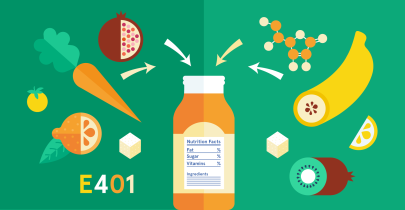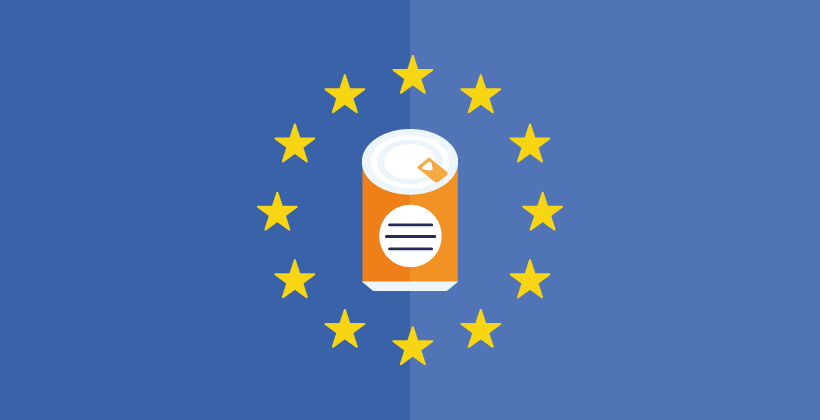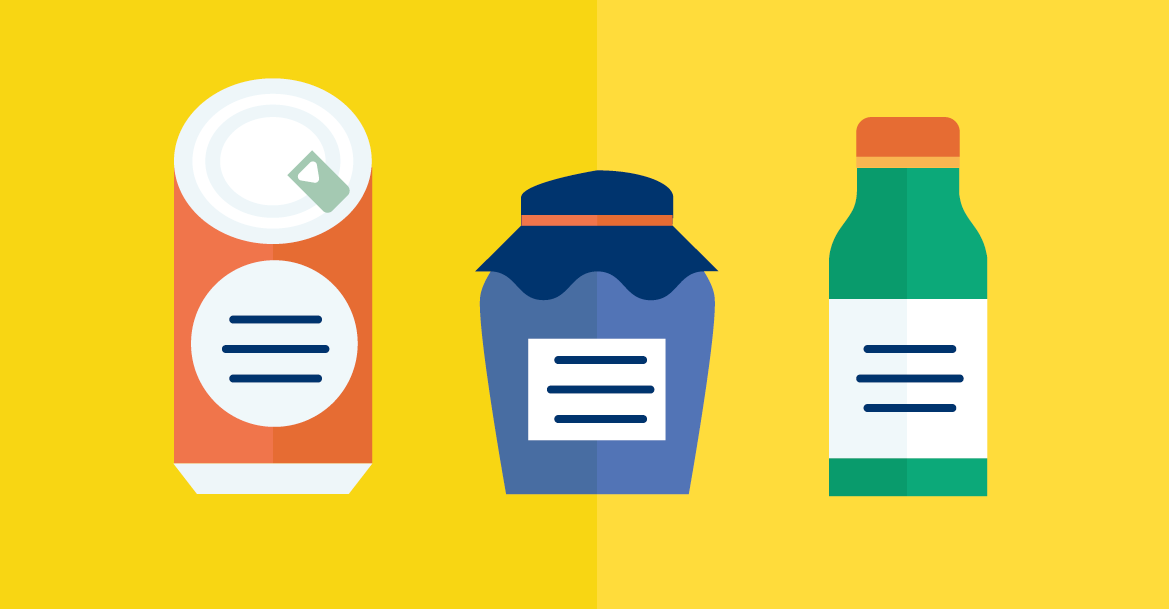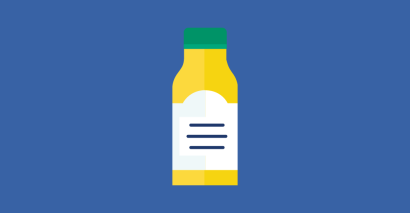Front-of-pack nutrition labelling
Last Updated : 08 July 2022Food labels help us understand what’s in packaged foods. By law, the label must include nutritional information providing the energy content in kilojoules (kJ) and kilocalories (kcal), fats, saturated fats (“saturates”), carbohydrates, sugars, protein, and salt per 100 gram (g) or 100 millilitres (ml).1 This information must be shown together and is most likely found on the back of the pack.
In addition to the mandatory nutrition labelling mentioned above, we may also see the use of additional forms of presentation of the nutritional information in the front of package, called “front-of-pack” (FOP) nutrition labelling. These aim to help consumers to see at a glance the essential nutrition information when purchasing foods.
What is front of pack labelling?
Front-of-pack nutrition labelling is simplified nutrition information on the front of food packaging that aims to help consumers with their food choices. It can either be a partial repetition of the information contained in the nutrition declaration (e.g., the energy value alone or the energy value together with the amounts of fat, saturates, sugars and salt) or it can give additional information on the overall nutritional quality of the food through symbols, letters, colour codes or other graphical formats, as long as they are based on scientific evidence. Examples of front-of pack labelling nutrition schemes include Nutri-Score and the UK traffic light scheme.2
Why do front-of-pack nutrition schemes exist?
FOP labelling aims to help consumers quickly grasp the nutritional quality of foods and how they can contribute to the energy and nutrient content of a diet. The two main goals are to give consumers additional information that can help them make healthier food choices and encourage the food industry to reformulate products towards healthier options (e.g., reformulating foods to contain less salt, sugars and/or fats, critical nurients that should be reduced).2
Is front-of-package labelling mandatory?
Under the current EU rules, it’s not mandatory to provide nutrition information on the front of packages, but food business operators can provide it voluntarily under certain conditions. However, the European Commission is working on a proposal for standardised front-of-pack nutrition labelling at EU-level as part of the Farm to Fork action plan.2
Who regulates the front of package nutrition information?
In Europe, nutrition labelling is regulated by the FIC Regulation (Regulation (EU) No 1169/2011 on the provision of food information to consumers). Besides defining the mandatory nutrition information on food labels, the law also foresees the use of additional forms of expression and other “voluntary food information” - where most FOP schemes apply - under specific criteria set in articles 35 and 36. 2
What are the most common front-of-pack labels?
FOP schemes can be classified as “nutrient-specific” or “summary indicators”, depending on the type of information they provide.3
Nutrient-specific schemes simply inform on specific nutrients the food contains. For example, they can show the percentage of nutrients the food provides (e.g., salt, fat, sugars) and how it compares to the daily recommendations.3
In turn, “summary indicators” provide consumers with an overall appreciation of the food’s healthfulness. This is the case for the Keyhole symbol, where foods with this specific logo are considered healthier within their food group, or Nutri-Score where foods are graded with a colour and letter that ranks them as healthier or less healthy within a scale.3
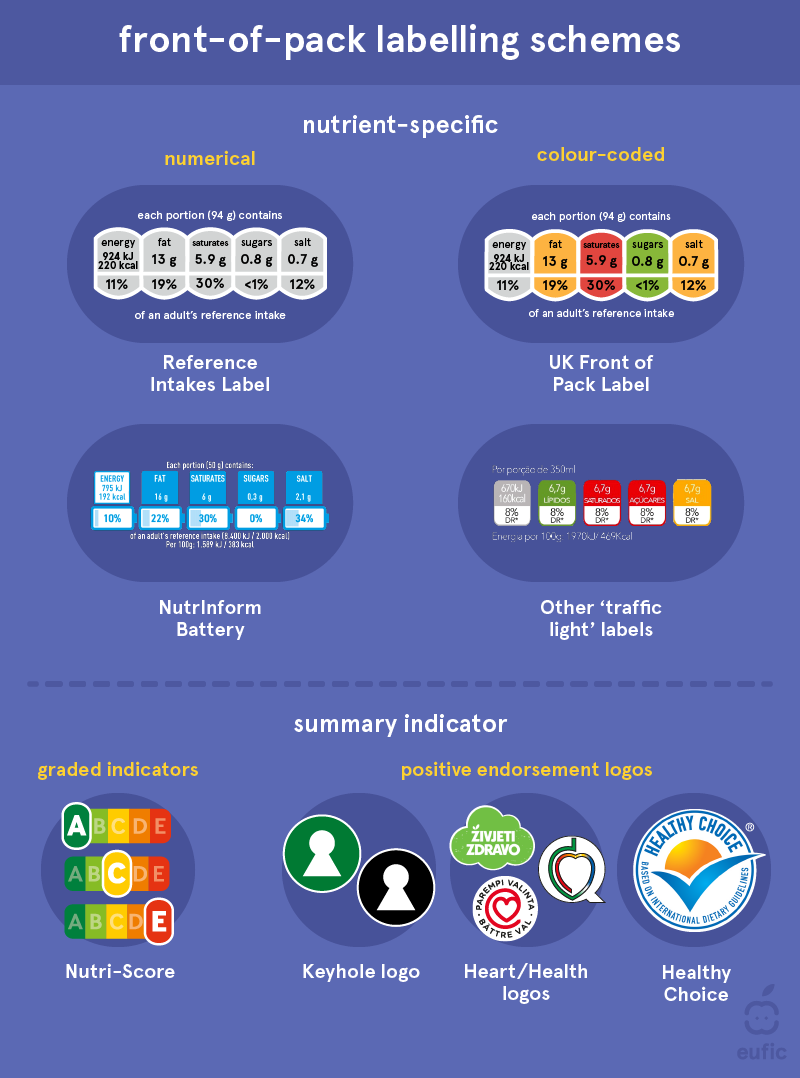
Fig. 1 - Different FOP nutrition schemes used in different European countries.
A variety of FOP schemes have been developed by public institutions, health NGOs and/or the private sector. However, the European landscape is mostly dominated by the Reference Intakes label. Other common schemes include Nutri-Score (widely used in France and Belgium), the Keyhole symbol (mainly used in Sweden, Denmark and Lithuania) and the UK traffic light scheme.
Reference Intake Label
Reference Intake Label is a nutrient-specific label developed by FoodDrinkEurope. The label shows how much energy and nutrients (fat, saturates, sugars and salt) there are in a portion of a food and how much it represents as a percentage of the daily reference intake. The scheme is used across the EU and retailers in some countries (e.g., Portugal and Spain) have developed their own versions that add colour-coding to the Reference Intakes label.
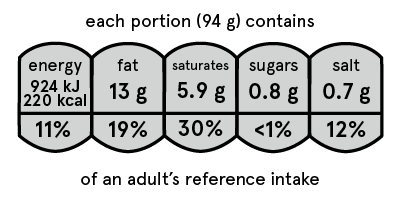
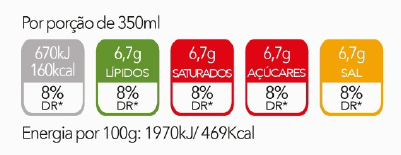
Fig. 2 – Reference Intake Label (on the left) and Portuguese traffic light label (on the right).
Nutriscore
Nutri-Score is a nutrition scheme based on UK Food Standards Agency nutrient profiling model and is used across different countries to help compare foods within same food group. The algorithm considers both “negative” (sugars, saturated fats, salt and calories) and “positive” (protein, fibre, fruits, vegetables, legumes and nuts) elements in 100 g or 100 ml of food to calculate the overall nutritional score.
Foods are then categorised into five coloured categories associated with letters from A to E that distinguish products with a higher nutritional quality (dark and light greens) from products with a lower nutritional quality (orange and red). Nutri-score can be applied to packaged goods (with a few exceptions) and uses slightly different algorithms for beverages, fats and oils, and cheeses.2
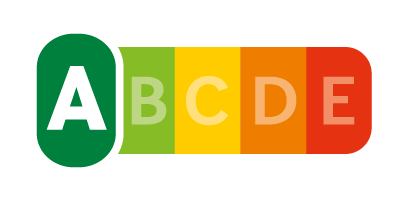
Fig. 3 – Nutri-score.
Keyhole symbol
Keyhole symbol is an example of a “positive indicator” or an “endorsement logo” developed by the Swedish Food Agency and also used by some food producers in Denmark, Lithuania, Norway and Iceland. The logo consists of a lock-shaped green symbol that identifies the healthier choice within 32 food groups (e.g. bread, cheese, ready meals, etc.).
To carry the Keyhole symbol, foods must comply with specific conditions regarding the amount of fat, sugars, salt, fibre, wholegrain, fruit and vegetables they provide, which are based on the Nordic Nutrition Recommendations. Ultimately, foods labelled the Keyhole symbol contain less sugars and salt, more fibre and wholegrain and less or healthier types of fat than food products of the same type that can’t be labelled with the Keyhole.4

Fig. 4 – Keyhole logo.
UK traffic light scheme
UK traffic light scheme is a UK-wide voluntary scheme that combines colour-coding and percentage reference intakes in a graphical format that resembles a traffic light. It shows the energy value (calories) and the amount (in grams) of fat, saturated fat, total sugars and salt by serving or portion of food. The colours green, amber and red are used to classify the amount of those nutrients per 100 g / mL of food/drinks as “low”, “medium” or “high”, respectively, in light of the percentage reference intakes.
The green (low) and amber (medium) thresholds are defined by the EU Reg 1924/2006 on nutrition and health claims that allow labelling foods as low in fats, sugars and salt. In turn, the red (high) cut-off is based on whether the nutrient provides >22% of the reference intake value per 100 g / ml. For products sold in large portions, portion thresholds apply for the red colour.2
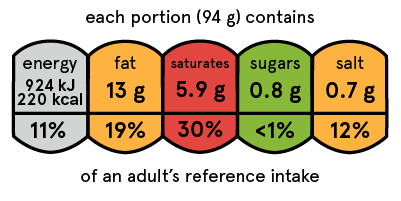
Fig. 5 – UK traffic light scheme.
What are the benefits and limitations of FOP schemes?
All schemes have their pros and cons but they all aim to help consumers recognise the differences in nutritional quality of different food products.
Indeed, the largest advantage of FOP labelling is its potential to help consumers make health-conscious food choices. Front-of-pack labelling gets more attention than labels on the back of the package and research shows that most FOP schemes can help consumers identify healthier options among products, particularly when labels use colour-coding. How such schemes end up affecting purchasing decisions or eating behaviour is less clear and needs more research, as it also depends on a variety of factors that include the consumer’s motivations, product prices and discounts, and expected tastiness, among others.2
Still, current evidence suggests that FOP schemes can have a positive impact in food choices, especially if their introduction is combined with awareness and/or communication campaigns.2 These are also important to avoid “oversimplifications” or misinterpretations on FOP schemes on how they can translate to a balanced diet. For example, it can be tempting to think that a healthy diet comes down to any combination of “positively” labelled products or that products marked as “green” can be consumed in higher amounts just because they’re considered healthier. However, the “healthfulness” of a single food can’t be assessed in isolation from the overall diet as its impact on health depends on further context such as how often and how much of it is consumed or whether it is consumed in combination with other foods Ultimately, FOP labelling can be a complement, not a substitute, to food-based dietary guidelines – which outline the principles of a healthy diet – by helping to guide the selection of specific foods within a food group.5
From a food reformulation perspective, FOP schemes aim to be an incentive for food producers to reformulate their products to get a better score, which could help the industry move towards healthier products. However, reformulation should be seen as an opportunity to improve the overall nutritional value of the food (and not only the nutrients present in concerning levels according to FOP schemes) and should ensure that the ingredients used as replacements are nutritionally more beneficial.6
An important limitation that the European Commission aims to overcome with its harmonised FOP scheme is the variability in the criteria used to score foods as more or less healthy within different schemes. Most FOP schemes are based on nutrient profiling methods which rank foods according to their energy and nutrient composition. However, there are discrepancies between the different schemes in the specific nutrients considered, the criteria used to set the scores, as well as whether the algorithm used is adjusted to different food groups or applicable to all food groups across the board. The variety of approaches and formats used in front-of-pack labels may add to consumer confusion and hinder the purpose of such schemes.2
References
- Regulation (EU) No 1169/2011 of the European Parliament and of the Council of 22 October 2011 on the provision of food information to consumers.
- European Commission (2020). Report from the Commission to the European Parliament and the Council regarding the use of additional forms of expression and presentation of the nutrition declaration.
- EFSA (2022). Scientific Opinion on the scientific advice related to nutrient profiling for the development of harmonised mandatory front-of-pack nutrition labelling and the setting of nutrient profiles forrestricting nutrition and health claims on foods
- Swedish Food Agency. The Keyhole. Accessed on May 2022.
- Julia C, et al. (2022). Are foods ‘healthy’ or ‘healthier’? Front-of-pack labelling and the concept of healthiness applied to foods. Br J Nutr. 127(6): 948-922. DOI: 10.1017/S0007114221001428
- British Nutrition Foundation (2022). Bridging gaps in food labelling. Nutrition Bulletin 47:2–8. DOI: 10.1111/nbu.12239
